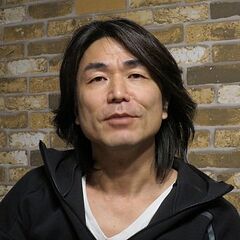Hiroyuki Nakagomi
From Sega Retro

|
| Hiroyuki Nakagomi |
|---|
| Employment history:
Divisions:
|
| Role(s): Designer |
| Education: Nagoya University of Arts[1] |
This teeny-tiny article needs some work. You can help us by expanding it.
Hiroyuki Nakagomi (中込 博之) is a former artist at Sega of Japan, best-known for his work on the Virtua Striker series[1].
Career
Before joining Sega, Hiroyuki Nakagomi was aiming for a career in advertising, which in Japan, was at its peak of flashiness. His first choice was Dentsu, but he eventually decided they might be difficult to work with and would assign him small, uncreative tasks rather than the flashy work he wanted to do. Even after deciding to enter the games industry instead, his first choice was Konami, due to his love of Twinbee and Ganbare Goemon. He failed the final examination, but went with Sega as their new recruit hiring process started later than other companies'.
He joined Sega in 1993 and was assigned to the AM2 department right after it had begun doubling down on its 3DCG focus following Virtua Racing. However, Nakagomi mainly worked on 2D art at first, such as an illustration of Wolf Hawkfield for Virtua Fighter promotion or the user interface and background textures in Daytona USA. Shortly after, he was the 5th person to begin work on Virtua Striker, partnering with director Satoshi Mifune, the 2 of them being the only soccer fans on the development team. He was also able to further harken back to his dream advertising career by including stadium advertisement boards.
Soccer also led to him leaving Sega. Around 2000, after working on Virtua NBA, he moved to Electronic Arts, which was looking for Japanese developers to work in Canada, and thus Nakagomi began working on the FIFA video game series.
Production history
Games
- (; 1994) — Designers
- (; 1995) — Designer
- (; 1995) — Planning Support
- (; 1995) — MF
- (; 1995) — Special Thanks
- (; 1997) — Motion Designers
- (; 1998) — design director
- (; 1999) — design directors
- (; 1999) — Motion Designers
- (; 2000) — Design & Motion Director
- (; 2001) — Motion Designers
Videos
- (; 1995) — Designers
External links
- Video Game Storytellers Part 5: The Journey of Satoshi Mifune and Hiroyuki Nakagomi, the Creators of Virtua Striker article by Fumio Kurokawa at 4Gamer.net (Japanese)